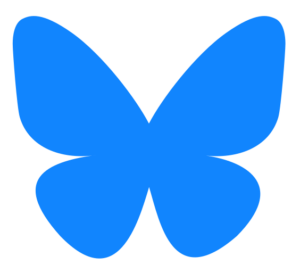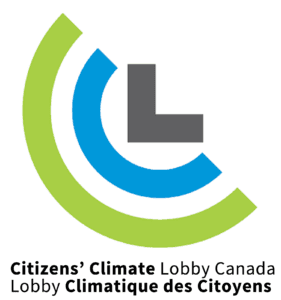Only federal governments can enact border carbon adjustments (BCAs) and only if they have a fully functioning federal carbon price. Additionally, BCAs take time to set-up. Thus, while establishing a national carbon price Canadian companies have to maintain competitiveness and reduce carbon leakage without BCAs. Canada has opted to use Output-based Pricing Systems (OBPSs) from 2019-2022 to get around this conundrum. OBPSs provide reduced carbon-pricing while encouraging leadership to regulated sectors and facilities to maintain competitiveness and minimize the risk of carbon leakage due to production moving to jurisdictions without carbon pricing. OBPSs matter most for sectors that are Emission-Intensive and Trade-Exposed (EITE). That is, they produce relatively large amounts of GHG emissions per unit of output, and they compete in highly traded markets, and competitiveness pressures. OBPSs lowers emissions by making EITE sectors cleaner instead of smaller and offers industry a way to price carbon and reduce emissions in EITE sectors while the rest of the world catches up on carbon pricing. The intent of the OBPSs are to encourage meaningful GHG reductions by: It’s best to think of output-based pricing in two steps. In the first step, companies pay the full carbon price on their GHG emissions. In the second step, the government returns some of the revenues to them as a subsidy. The overall result is that a high-emitting facility will pay a higher net carbon tax, and a low-emitting facility will pay a lower one. On Wednesday, August 1, 2018, changes were made to the amount of carbon pricing revenues the federal government plans to return to Emission-Intensive and Trade-Exposed (EITE) sectors in order to protect their competitiveness and avoid carbon leakage. Previously, it had planned to return 70% of what it collected from these sectors. Now it plans to return 80%, or 90% if the sector is particularly vulnerable. Frankly, until we can finally agree as a nation in totality to embrace carbon pricing, we won’t have border carbon adjustments, Thus we are stuck with competitiveness issues and not effectively reducing carbon emissions. If people really want industry to pay they need to ask Ontario and Saskatchewan to cease and desist on their constitutional challenges for carbon pricing so we can finally plan towards border carbon adjustments. WHO: Output-based pricing systems (OBPS) apply to industries for which a standard emission intensity has been developed and thus far includes: oil and gas, pulp and paper, chemicals, ethanol, nitrogen-fertilizers, lime, cement, base metal smelting and refining, potash, iron ore pelletizing, mining, iron and steel, and food processing. The OBPS will apply to industrial facilities that emit 50 kilotonnes (kt) CO2e or more or that emit between 10 and 50 kt CO2e per year and whose application for voluntary participation is approved. WHEN: Provinces and territories that choose the federal backstop OBPS, in whole or in part, must have confirmed this by March 30, 2018. Those opting to establish or maintain a provincial or territorial pricing system that meets the benchmark need to outline how they are doing so by September 1, 2018. After reviewing each system, the Government of Canada intends to implement the federal backstop in whole or in part on January 1, 2019, in any province and territory that does not have a carbon pricing system that meets the benchmark. To minimize uncertainty for residents, businesses and investors, once in effect, the backstop will remain in effect until at least 2022. From 2019 onwards, there will be an annual verification process to ensure carbon pricing systems continue to meet the benchmark. The government of Canada will also monitor major changes to provincial and territorial systems on an ongoing basis. Paying a charge to the Government of Canada. This charge will be set at the same level as the fuel charge ($10 per tonne CO2e in 2018, increasing by $10 per tonne CO2e each year to $50 per tonne CO2e in 2022) and then return 80-90% of the money back to the industry depending on the industry’s vulnerability. (recently changed) Submitting surplus credits issued by the federal government Submitting eligible offset credits For years CCL has advocated for Border Carbon Adjustments (BCA) to help with competitiveness issues and carbon leakage when Canada imposes a carbon pricing policy. While you are may we also recommend the following laser talks as well: LASER TALK: Output-based Pricing Systems
– Comparing facilities against their cohort of peers to encourage leaders.
– Sending a price signal to influence future investments.CCL recommends that OBPSs should be temporary and ultimately replaced with border carbon adjustments.
REFERENCES
http://www.pembina.org/blog/output-based
https://www.alberta.ca/assets/documents/CCI-OBA-presentation-Dec-2017.pdf
https://ecofiscal.ca/2017/05/24/explaining-output-based-allocations-obas/
https://www.canada.ca/en/services/environment/weather/climatechange/technical-paper-federal-carbon-pricing-backstop.html
LASER TALK: Changes to Canada’s Output-Based Pricing system
Some reporting on this change has suggested that it means the price companies pay has fallen from 30% of the full carbon price to 10-20%. But this isn’t accurate. While it may be true for the sector as a whole (and even then, only half-true), it is not at all true for individual companies because a high-emitting facility will pay a higher net carbon tax, and a low-emitting facility will pay a lower one.
https://ecofiscal.ca/2018/08/03/understanding-the-recent-changes-to-the-federal-carbon-price/
LASER TALK: Output-based Pricing Systems – Policy Wonk Version
WHY: The aim of the OBPS is to minimize competitiveness risks for emissions-intensive, trade-exposed industrial facilities, while retaining the carbon price signal and incentive to reduce GHG emissions.
HOW: Industrial facilities that are registered under the OBPS will be able to purchase charge-free fuel from the time the charge starts to apply. OBPS facilities will instead be subject to the carbon price on the portion of their emissions that exceed an annual output-based emissions limit.
An OBPS facility’s annual GHG emissions limit, expressed in tonnes of CO2e, will be based on the prescribed output-based standards (OBS) for the production activities that the facility undertakes. The limit for a single-product facility will be determined by multiplying the applicable output-based standard and the facility’s total annual production. For a facility to which more than one output-based standard applies, the annual facility emissions limit will be based on the sum of the limits for each product, expressed as follows:
Annual Facility Emissions Limit (tonnes CO2e) = ∑i=1n[OBSi(tonnes CO2eunits i)×Productioni(units i)]
The compliance obligation of a facility will be calculated as follows:
Compliance obligation (tonnes CO2e) = Total annual facility emissions – Annual facility emissions limit
The Government of Canada will issue surplus credits to facilities whose emissions are below their annual facility emissions limit. A facility whose emissions are above its limit will have three options to meet its obligation:
References:
https://www.canada.ca/en/services/environment/weather/climatechange/climate-action/pricing-carbon-pollution/output-based-pricing-system.html
https://ecofiscal.ca/2017/05/24/explaining-output-based-allocations-obas/
Laser Talk: Why Output-Based Carbon Pricing is a Logical First Step
LASER TALKS – In Depth Laser Talks on Output Based Carbon Pricing
Home » LASER TALKS – In Depth Laser Talks on Output Based Carbon Pricing








